A well-designed and functional kitchen makes life at home more enjoyable. But the costs of Kitchen Remodeling Lexington KY can add up quickly. Materials make up the largest percentage of remodel expenses. Installing new cabinets and hardware is expensive, but high-quality materials last longer and look better than cheap alternatives. Switching to energy-efficient appliances and plumbing fixtures can also save you money in the long run.
Cabinets
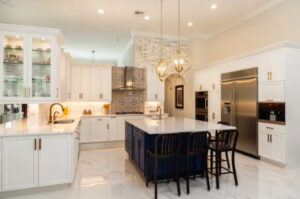 The biggest expense in a kitchen remodel is new cabinets, which can account for 14 to 41 percent of the total project cost. The exact amount depends on whether you’re planning to refinish or replace your cabinets, and the material you choose for them. Plywood and wood veneers tend to be cheaper than solid wood options.
The biggest expense in a kitchen remodel is new cabinets, which can account for 14 to 41 percent of the total project cost. The exact amount depends on whether you’re planning to refinish or replace your cabinets, and the material you choose for them. Plywood and wood veneers tend to be cheaper than solid wood options.
If you’re on a tight budget, try to minimize installation costs by buying ready-to-assemble cabinets or finding bargains at the Habitat for Humanity Re-Store. You can also save on demolition costs and local dump fees by removing your old cabinets yourself and hauling them away to be recycled or donated.
If you decide to hire a professional to install your new cabinets, be sure to compare quotes from multiple companies. And don’t forget to factor in the cost of new paint and hardware for your cabinets, as well as any labor to remove and reinstall existing plumbing or electrical fixtures. Resist fancy add-ons, like cabinet and drawer dividers or vertical spice racks, that can increase your project costs. Instead, prioritize your must-have features and stick with standard drawers and cabinets that won’t break the bank. This helps keep your budget intact for more important upgrades later on in the project, such as a fresh coat of paint or a brand-new dishwasher.
Countertops
The cost of countertops varies widely based on the material you choose and your location’s labor rates. The National Kitchen and Bath Association estimates that countertop expenses account for 11% of total kitchen remodel costs.
Budget-friendly materials like tile or laminate can save you 50%-80% compared to granite. Quartz is another popular option, but it can be pricey. It’s heat-, scratch-, chemical-, and stain-resistant and comes in a variety of colors and patterns.
When choosing a countertop, consider your goals and lifestyle. For example, if you’re thinking about selling your home in the future, you may want to opt for high-quality counters that will increase the value of your property.
Make sure to take into consideration the type of edging you want and any cutouts, as these can add significantly to your countertop’s overall cost. Standard edging options include eased, beveled, or bullnose. You should also consider the cost of disposal and installation. Labor charges vary by contractor and can depend on the size of your project, the style of your kitchen, and whether you’re changing the floor plan. Also, any specialty work, such as rewiring lighting or moving plumbing or gas lines, will increase your cost.
Appliances
A kitchen remodeling project includes the installation of new appliances. This includes a range, oven, microwave, dishwasher and refrigerator. The costs of these vary depending on the brands and features chosen, but a typical appliance package runs between $2,500 and $4,300 with installation.
The addition of kitchen lighting is another key element to consider during a remodel. This can include ambient ceiling lights, pendants or chandeliers over the kitchen island or dining table as well as task lighting, like under-cabinet lights or LED strip lighting, in drawers and cabinets. A good rule of thumb is to plan on spending $500 to $2,000.
It’s important to consider your goals and how they relate to the resale value of your home when choosing products and materials for your remodel. For example, investing in high-end finishes may be more expensive, but they can add significant resale value if your property is in a popular area. Likewise, it’s not smart to knock down walls just because you want to open up the space; some walls are load-bearing and require professional help to remove. Be sure to work with an experienced contractor to avoid any surprises that may come up during the project.
Flooring
Depending on your flooring budget, you can choose from a wide variety of materials. Vinyl, resilient, or tile are all popular choices for kitchens because of their durability and affordability. Laminate offers a stylish look with little maintenance. For a more luxurious floor, consider natural stone like granite or marble. These floors are more expensive but add a sophisticated feel to the room.
You’ll also need to budget for new walls and ceilings. Replacing existing drywall can cost $2 to $6 per square foot, while a fresh coat of paint will run you $300 to $750. New piping can be pricey, too, especially if you’re switching from copper to CPVC pipes.
It’s important to remember that kitchen remodel costs can quickly add up, so you want to stick to your budget and only do what you can afford. For example, if you’re remodeling a small kitchen on a budget, it might make more sense to save money where you can by installing reused cabinets or using recycled materials instead of new countertop products. You should also focus on high-return improvements like painting walls and installing a new light fixture that will instantly add value to your home.
Lighting
Homeowners often encounter various terms with similar meanings when researching kitchen remodel prices. To avoid any confusion, homeowners should clarify the lingo with their contractor before making any major decisions. For example, a renovation may be a small change or addition, while a remodel is more of an overhaul. Additionally, a major/upscale remodel is typically more expensive than a standard remodel because it includes high-end and specialty items.
Kitchen cabinets are a significant cost for any remodel. The price of stock cabinets varies depending on the material, while custom cabinets are more expensive. Countertops can also vary in cost. The type of material, thickness, and shape all affect the final cost. Additionally, finishing options like edge routing or honed natural stone can increase the cost.
Upgrading your kitchen lighting is a simple but effective way to improve the look of your kitchen. A DIY swap of your outdated sink light for a farmhouse-style pendant costs about $50, while hiring a professional to install sleek recessed lights can run you $150 per fixture.
Some electrical projects are necessary during a kitchen remodel, including adding GFCI outlets and moving electrical outlets away from water sources. These updates can make your kitchen safer and more efficient.
Plumbing
If the kitchen’s layout remains largely unchanged, plumbing costs should be relatively low. However, changing the location of a sink or faucet can quickly increase these costs. For example, moving a sink from one side of the room to another could require the installation of new drain lines and gas or water supply pipes, and may even require the relocation of existing plumbing.
Installing new windows and doors can also add to the cost of a kitchen remodel. These costs can vary significantly depending on how many doors and windows are being installed, as well as their configuration. For example, installing a window that opens to the outdoors can be more expensive than a window located in a wall.
In addition to these fixed costs, homeowners should consider the cost of labor. It’s a good idea to obtain multiple quotes and choose contractors carefully, making sure they are licensed and insured. In general, a homeowner can expect to spend 20%-35% of the total kitchen remodel cost on labor.
Electrical
Changing the electrical system in your kitchen can be costly. It’s important to determine what you want versus need in your remodeled kitchen and plan accordingly. For example, it’s not just about the number of lights, you also need to think about the power required for appliances, a dishwasher, and possibly even a new refrigerator.
Moving and rerouting piping and plumbing is a big cost consideration, as well as adding more outlets or upgrading to energy-efficient options. If you’re remodeling an older home, the wiring might need to be replaced altogether. This can add up quickly when the electricians are at work and requires time and materials.
Choosing the right materials for your kitchen will also impact the final cost of your project. Natural stone products like granite and quartzite are luxurious choices with a price tag to match, while other durable options such as ceramic tile can be less expensive and still offer an attractive look. Regardless of what you choose, it’s best to come up with a budget early and be prepared for unexpected expenses during the project. This way, you won’t go overboard and risk putting your house up for sale at a later date.
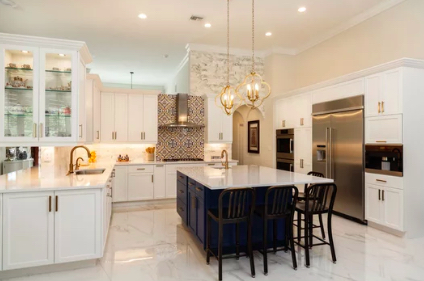
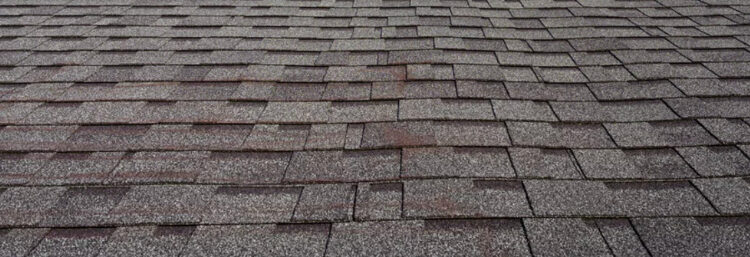
 Asphalt shingles are among the most common roofing materials used on homes. They’re economical, easy to install, and available in various colors. They work well on most roofs, but do not work well on flat or low-sloped roofs. They’re also not as energy efficient as some other roofing materials.
Asphalt shingles are among the most common roofing materials used on homes. They’re economical, easy to install, and available in various colors. They work well on most roofs, but do not work well on flat or low-sloped roofs. They’re also not as energy efficient as some other roofing materials.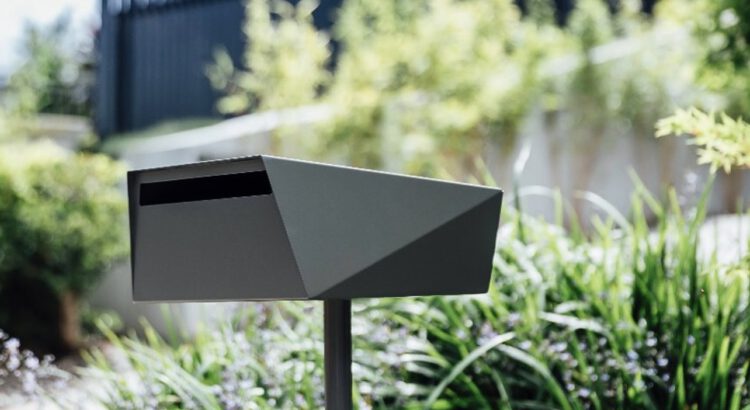
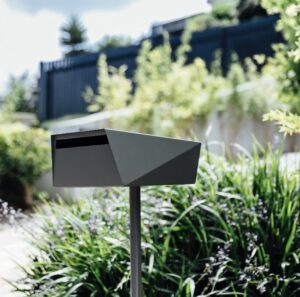 A planter or letter box is a great way to add color and personality to your home. It can be made from wood, metal, plastic, or other materials. You can also use it to grow flowers or vegetables. It can be hung on the wall, placed on the floor, or set on a table. There are many different types of planters and letter boxes, so choosing one that fits your style is important.
A planter or letter box is a great way to add color and personality to your home. It can be made from wood, metal, plastic, or other materials. You can also use it to grow flowers or vegetables. It can be hung on the wall, placed on the floor, or set on a table. There are many different types of planters and letter boxes, so choosing one that fits your style is important.